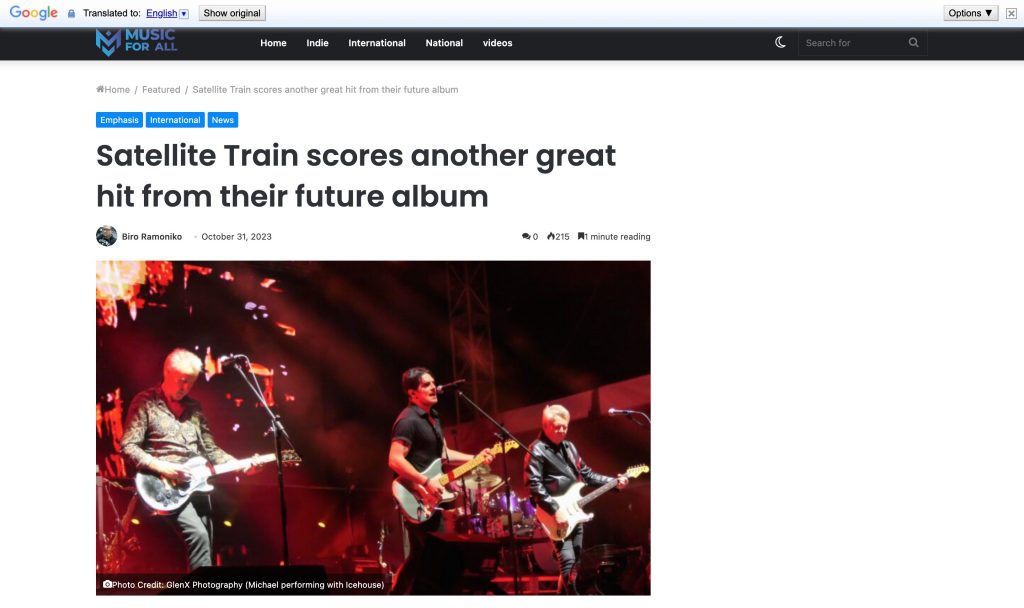Satellite Train On the Making Of “Cry”

Satellite Train On the Making Of “Cry”

Photo Credit: GlenX Photography (Michael performing with Icehouse)
Is there a person/event that stimulated the creation of “Cry?”
The song “Cry” drew its inspiration primarily from a childhood friend. However, it also incorporated aspects from other people who shared similar experiences to the narrative presented in the song.
Were there any memorable or standout moments during the recording sessions for “Cry?”
“Cry” is a track from Satellite Train’s debut album, “The Melbourne Sessions,” set for release later this year. The recording process mainly took place during a weekend session. The band came into the studio without any demo recordings. We had only basic charts, and the music you hear in the final product was born out of spontaneous inspiration. A significant event during the recording was the absence of the drummer, which led to John (Watto) Watson stepping in and contributing to the project, ultimately enhancing the chemistry. The scheduled drummer was unreachable for days due to partying with another band he had performed with the previous night.
What did you enjoy most about making “Cry?”
During the initial day of recording, the drum sounds may not have been perfect. However, the team replaced the snare on the second day, resulting in improved drum quality. Furthermore, “Cry” stood out due to its intriguing melodies and the enjoyable process of adding vocal chants, with all band members participating in the vocal chant sections.
Can you share a bit about your musical background and the journey that led you to where you are today?
The band members have established themselves as prominent figures in the Australian music scene. Guitarist Shane O’Mara, keyboard player John McAll, drummer John (Watto) Watson, and bassist Pasquale Monea collectively represent a wealth of musical talent. A common thread in our musical journeys is starting musical pursuits at a young age. While our paths vary, we share the foundation of beginning our musical careers early in life. For instance, John and Shane both graduated from the Victorian College of the Arts, contributing elements of jazz, classical, blues, and various other styles into the songs. John initially joined the session to handle keyboard duties, but a spontaneous decision was made to have him play the piano instead, as the studio was equipped with one.
How do you approach collaborations with other musicians or artists
In our project, we prioritize artistic freedom for our collaborators. It’s not an industry-driven endeavor. Instead, it’s a project driven by the band’s desire to produce spontaneous and quality music and enjoy the creative process. Consequently, we encourage fellow musicians to express themselves and contribute as they see fit.
Review: https://www.thepunkhead.com
Recent Posts
- The Musical Multiverse Exists: An Interview with Satellite Train
- One Albums, Two Worlds: The Melbourne Sessions Dolby Multiverse Experience
- Satellite Train: 10 questions about the Multiverse experience
- Satellite Train Channels the Iconic Spirit of the Hollywood Actor in “James Dean”
- James Dean by Satellite Train
Recent Comments